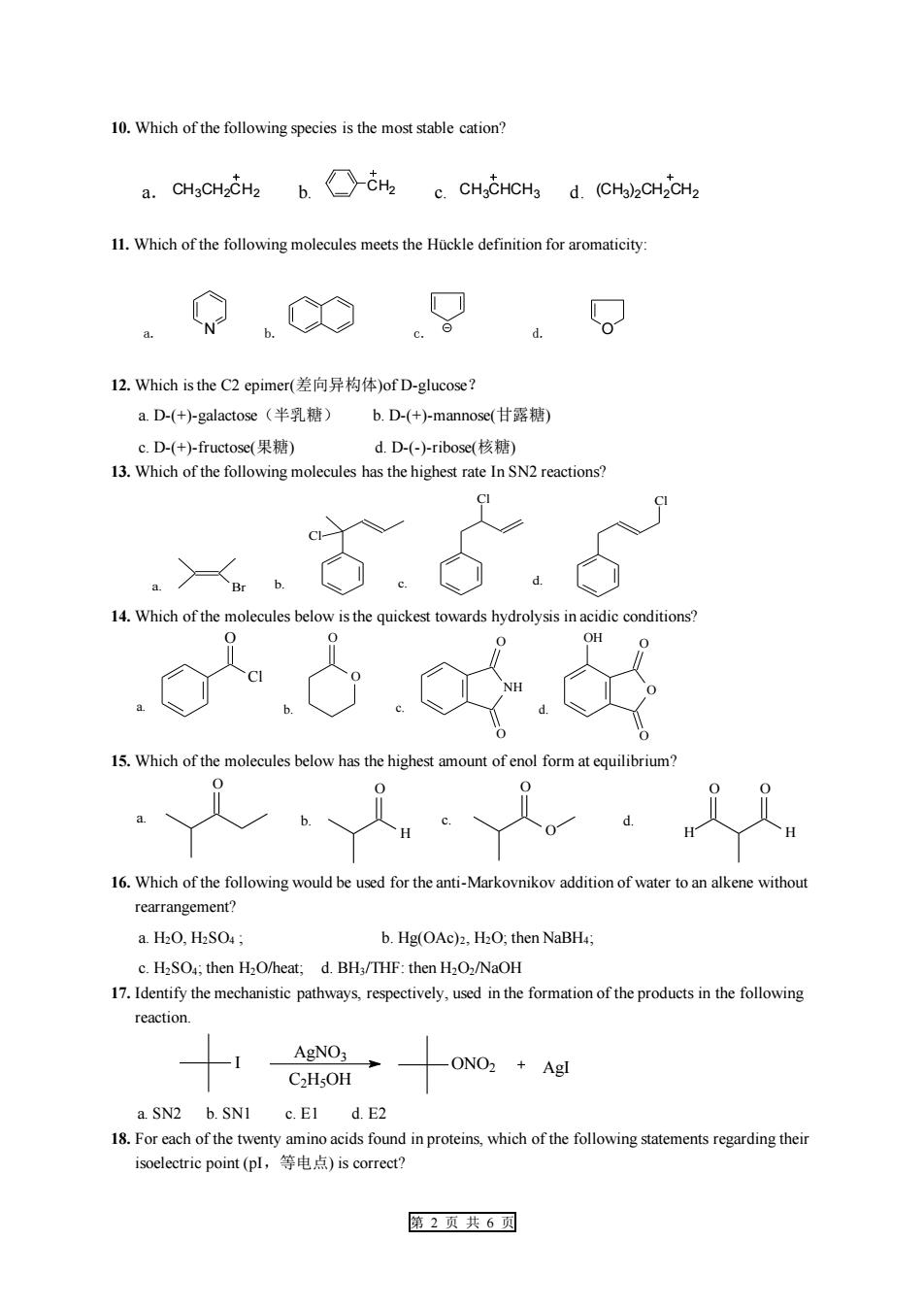正在加载图片...

10.Which of the following species is the most stable cation? a.CHaCHEHa b.C c.CHgCHCHa d.(CH)CH,CH2 11.Which of the following molecules meets the Huckle definition for aromaticity g.00 12.Which is the C2 epimer((差向异构体)ofD-glucose? a.D-(+)-galactose(半乳糖) b.D-(+mannose(甘露糖) c.D-(+-fructose果糖) dD-(--ribose核糖) 13.Which of the following has the highest rate In 4.Which of the w is the quickest towards hydrolysis ir .d.. 15.Which of the molecules below has the highest amount of enol form at e 16.Which of the following would be used for the anti-Markovnikov addition of water toan alkene withou rearrangement a.H2O,H2SO b.Hg(OAc)2,H2O.then NaBH; c.H2SO:then H2O/heat:d.BH:/THF:then H2Oz/NaOH 17.mechanistic pathways respectively,usedin the products nthe following reaction 十1cea -ONO2 Agl a.SN2 b.SNI e.E1 d.E2 18.Foreach of the twenty found inproteins which ofthe following statements regarding their isoelectric point(pl,等电点)is correct? 第2页共6页第 2 页 共 6 页 10. Which of the following species is the most stable cation? a. CH3CH2CH2 b. CH2 c. CH3CHCH3 d. (CH3 )2CH2CH2 11. Which of the following molecules meets the Hückle definition for aromaticity: a. N b. c. d. O 12. Which is the C2 epimer(差向异构体)of D-glucose? a. D-(+)-galactose(半乳糖) b. D-(+)-mannose(甘露糖) c. D-(+)-fructose(果糖) d. D-(-)-ribose(核糖) 13. Which of the following molecules has the highest rate In SN2 reactions? 14. Which of the molecules below is the quickest towards hydrolysis in acidic conditions? O O NH O O OH O O O a. b. c. d. O Cl 15. Which of the molecules below has the highest amount of enol form at equilibrium? a. b. c. d. O H O O O H O H O 16. Which of the following would be used for the anti-Markovnikov addition of water to an alkene without rearrangement? a. H2O, H2SO4 ; b. Hg(OAc)2, H2O; then NaBH4; c. H2SO4; then H2O/heat; d. BH3/THF: then H2O2/NaOH 17. Identify the mechanistic pathways, respectively, used in the formation of the products in the following reaction. I AgNO3 C2H5OH ONO2 AgI a. SN2 b. SN1 c. E1 d. E2 18. For each of the twenty amino acids found in proteins, which of the following statements regarding their isoelectric point (pI,等电点) is correct? Br Cl Cl Cl a. b. c. d